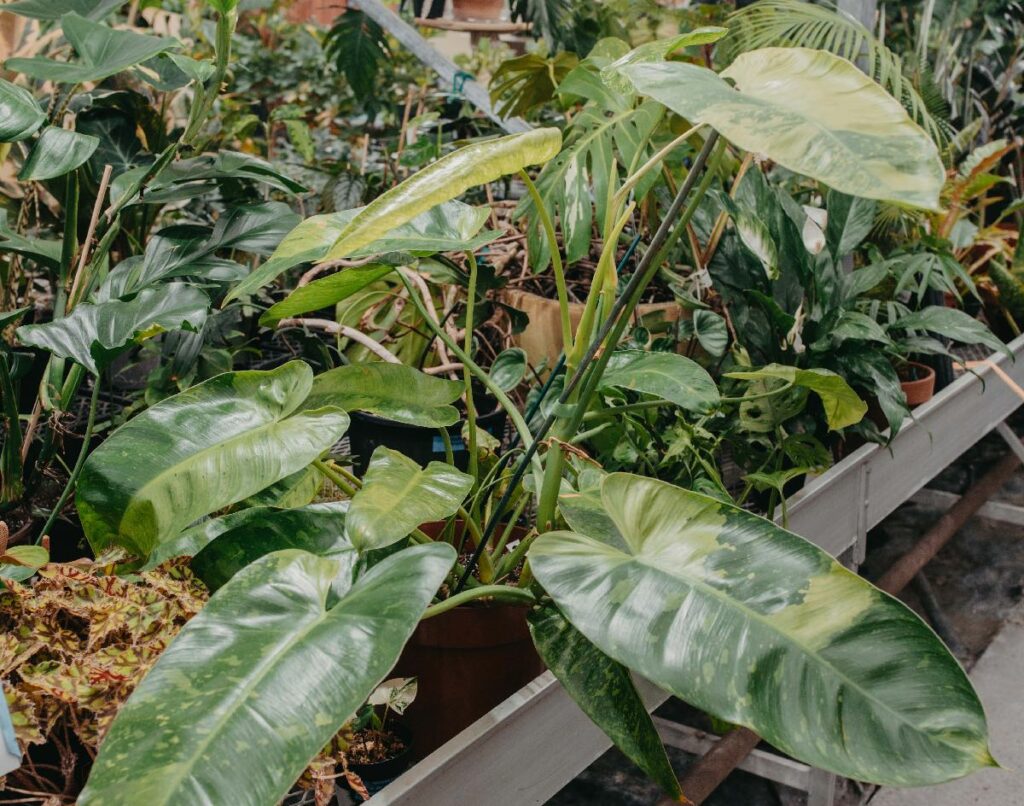Pothos and philodendron plants are undoubtedly two of the most sought-after houseplants worldwide. Their popularity stems from their ease of care and the natural touch they add to any indoor space. However, despite their apparent similarities, these two plants are not identical. In fact, they belong to different plant families and possess unique characteristics that set them apart.
In this article, we’ll dive into the basics of pothos and philodendron plants, including their differences in appearance, care requirements, and more. Whether you are a seasoned plant enthusiast or a beginner looking to add some greenery to your home, understanding the differences between these two plants will help you choose the right one for your needs.
So, let’s start with the basics. Pothos and philodendron plants are both tropical plants that thrive in warm, humid environments. They are known for their lush green foliage, which can vary in shape and size. However, while pothos plants have heart-shaped leaves, philodendron plants have broader, more elongated leaves.
When it comes to care requirements, both plants are relatively easy to care for. They require moderate watering and indirect sunlight. However, pothos plants are more forgiving when it comes to watering, while philodendron plants are more sensitive to overwatering. Additionally, pothos plants can tolerate lower light conditions than philodendron plants.
In terms of propagation, both plants can be propagated through stem cuttings. However, pothos plants are easier to propagate than philodendron plants. Pothos cuttings can be rooted in water, while philodendron cuttings require soil.
While pothos and philodendron plants share some similarities, they are not the same. Understanding their differences in appearance, care requirements, and propagation can help you choose the right plant for your needs. So, whether you opt for the heart-shaped leaves of the pothos or the elongated leaves of the philodendron, you can rest assured that you have made an informed decision.
Physical Characteristics: How to Identify Pothos and Philodendron Plants
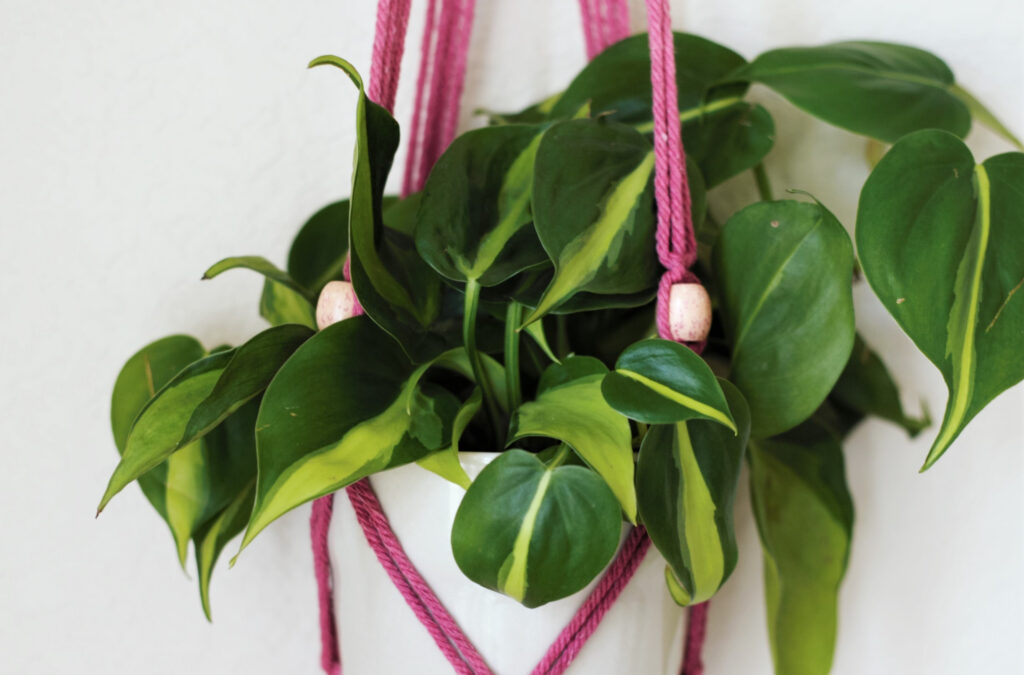
These two plants share a striking resemblance, but there are some key physical characteristics that can help you differentiate between the two.
Pothos plants are known for their heart-shaped leaves that are typically variegated with shades of green, yellow, and white. These leaves are glossy and waxy to the touch, and they grow on long, trailing vines that can reach up to 30 feet in length. Interestingly, pothos plants also have aerial roots that grow from the stems and can be used to anchor the plant to a support structure.
On the other hand, philodendron plants have larger, more elongated leaves that are typically solid green in color. These leaves are also glossy and waxy, but they have a more pointed shape than pothos leaves. Philodendron plants grow on upright stems that can reach up to 3 feet in height, and they do not have aerial roots like pothos plants.
It is important to note that the growth habits of these plants also differ. Pothos plants are fast-growing and can quickly fill up a space with their trailing vines. Philodendron plants, on the other hand, grow more slowly and tend to stay more compact, making them a good choice for smaller spaces.
While pothos and philodendron plants may look similar at first glance, their physical characteristics can help you identify which plant is which. By paying attention to the shape and color of the leaves, as well as the growth habits of the plant, you can easily tell the difference between these two popular houseplants.
Growth Habits: Differences in Growth Patterns and Requirements
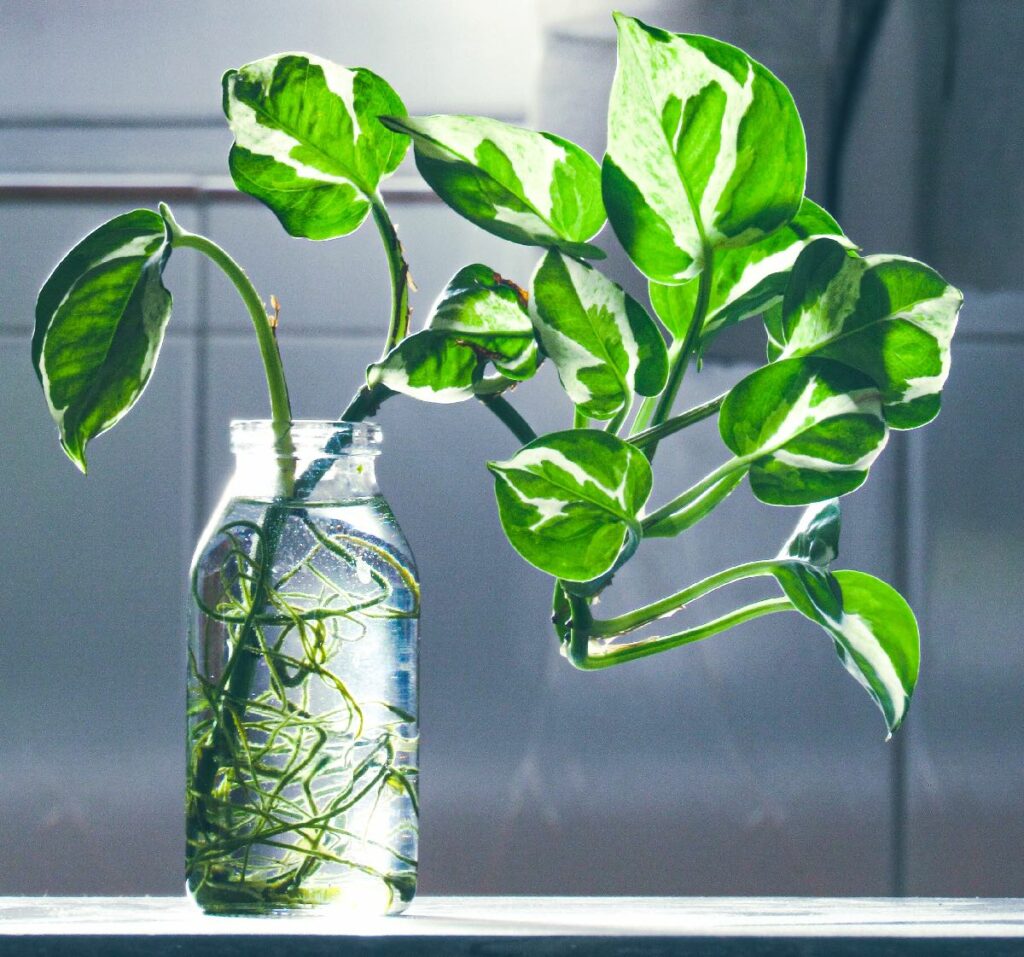
When it comes to the growth habits of plants, pothos and philodendron are two species that stand out with their unique characteristics. Pothos plants are known for their rapid growth, which can quickly fill up any space with their long, trailing vines. They are also famous for their ability to tolerate low light conditions, making them a popular choice for indoor spaces. Pothos plants prefer to be kept slightly moist and can thrive in a variety of soil types, which makes them a versatile option for any gardener.
On the other hand, philodendron plants tend to grow at a slower pace and have a more upright growth pattern. They are known for their large, glossy leaves that can grow to be quite tall if given the proper conditions. Philodendrons require bright, indirect light and well-draining soil to thrive. They also prefer to be kept consistently moist, but not waterlogged, which can be a bit tricky for some gardeners.
Overall, while both pothos and philodendron plants are relatively easy to care for, their growth habits and requirements do differ. If you’re looking for a fast-growing, low-maintenance plant that can tolerate low light conditions, a pothos plant may be the way to go. However, if you’re looking for a larger, more upright plant that requires bright, indirect light, a philodendron may be a better fit for your space. So, choose wisely and enjoy the beauty of these amazing plants!
Care and Maintenance: Tips for Keeping Pothos and Philodendron Plants Healthy
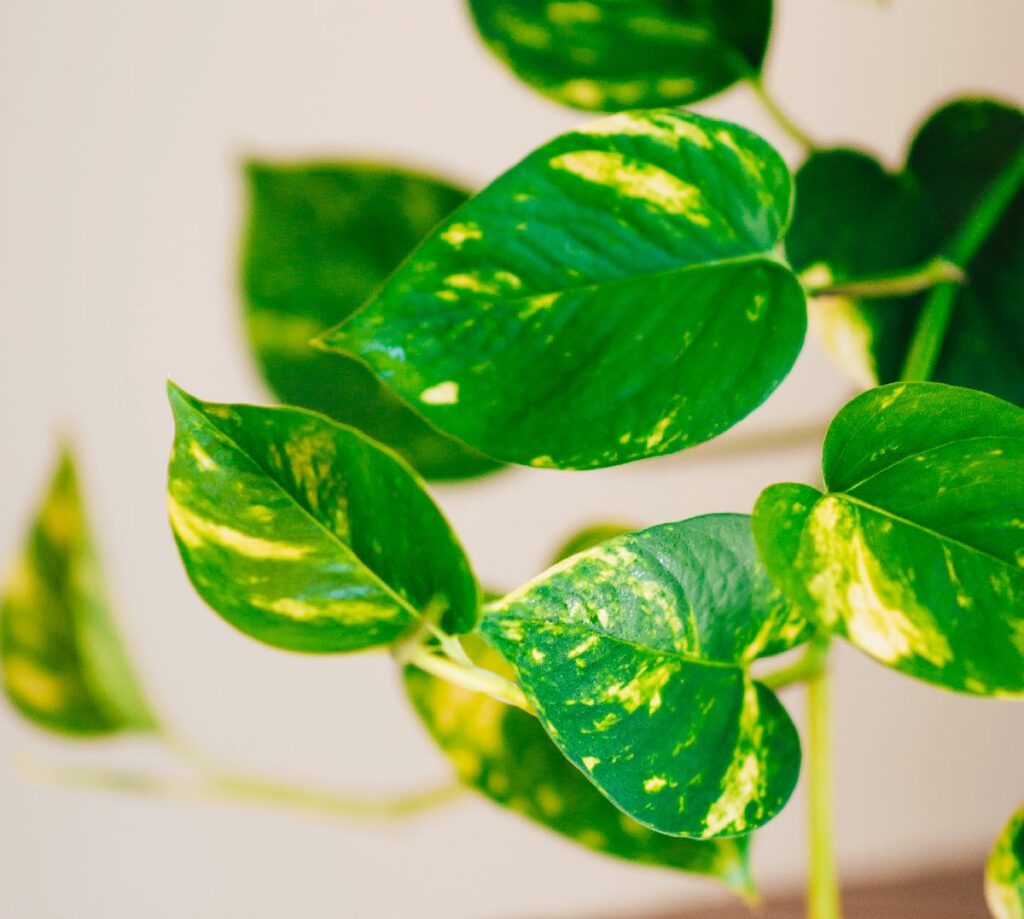
Indoor plants are a great way to add some greenery to your home, and pothos and philodendron plants are two of the most popular choices. But, as with any living thing, they require some care and maintenance to stay healthy. Here are some tips to help you keep your pothos and philodendron plants in tip-top shape:
Watering
These plants prefer soil that drains well, so make sure to water them only when the top inch of soil feels dry to the touch. Overwatering can lead to root rot, which is definitely not what you want.
Light
Pothos plants like bright, indirect light, while philodendrons can handle lower light levels. But don’t let them get too much direct sunlight, or their leaves could get scorched.
Fertilizer
During the growing season (spring and summer), both plants benefit from regular fertilization. Use a balanced, water-soluble fertilizer every 2-3 weeks to keep them healthy and happy.
Pruning
If you don’t prune your pothos and philodendron plants regularly, they can get leggy and unattractive. To encourage bushier growth, pinch back the tips of the vines.
Propagation
If you want to make more pothos and philodendron plants, it’s easy to do with stem cuttings. Just cut a stem with several leaves and put it in water or soil until roots develop.
By following these tips, you can ensure that your pothos and philodendron plants stay healthy and beautiful for years to come.
Propagation: Methods for Reproducing Pothos and Philodendron Plants
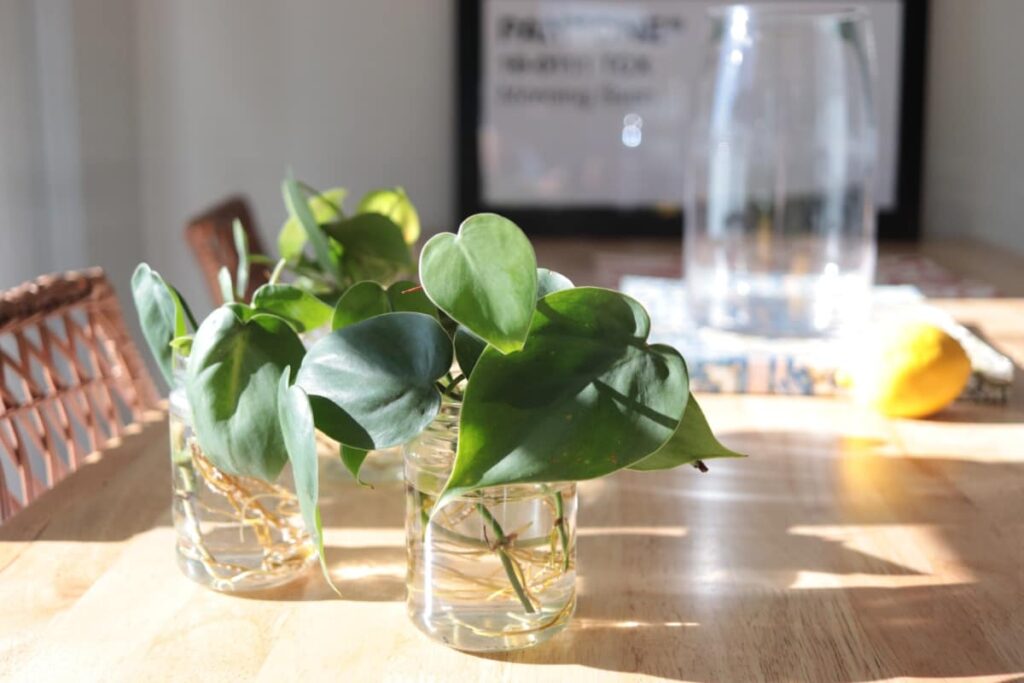
Indoor gardeners rejoice! The propagation of pothos and philodendron plants is a breeze. Here are some methods to reproduce these plants:
Pothos:
Stem cuttings
Take a stem cutting that is at least 4 inches long and has a few leaves. Remove the bottom leaves and place the cutting in water or soil. Keep the soil moist and the cutting in a warm, bright location. Roots should start to form in a few weeks.
Division
If your pothos plant has grown too large for its pot, you can divide it into smaller plants. Gently remove the plant from its pot and separate the roots into smaller sections. Plant each section in its own pot with fresh soil.
Air layering
This method involves making a small cut in the stem of the plant and wrapping it with moist sphagnum moss. Cover the moss with plastic wrap and secure it with tape. Roots should start to form in a few weeks. Once the roots are established, cut the stem below the moss and plant it in soil.
Philodendron:
Stem cuttings
Take a stem cutting that is at least 4 inches long and has a few leaves. Remove the bottom leaves and place the cutting in water or soil. Keep the soil moist and the cutting in a warm, bright location. Roots should start to form in a few weeks.
Division
If your philodendron plant has grown too large for its pot, you can divide it into smaller plants. Gently remove the plant from its pot and separate the roots into smaller sections. Plant each section in its own pot with fresh soil.
Leaf cuttings
This method involves taking a leaf cutting with a small piece of stem attached. Place the cutting in water or soil and keep it in a warm, bright location. Roots should start to form in a few weeks. Once the roots are established, plant the cutting in soil.
The propagation of pothos and philodendron plants is a simple and rewarding process. With a little bit of patience and care, you can create a stunning indoor garden filled with these lush, green plants.
Common Varieties: Overview of Popular Pothos and Philodendron Plant Types
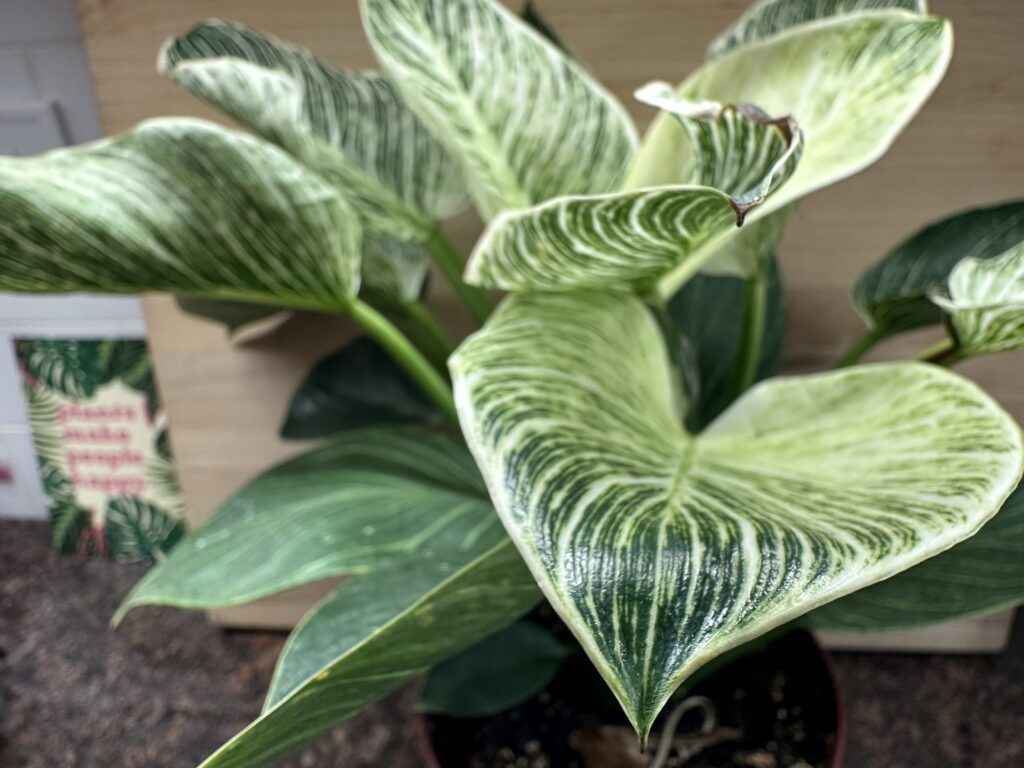
Indoor gardening is a popular pastime for many, and pothos and philodendron plants are two of the most sought-after choices. These plants are known for their low maintenance and stunning foliage, but despite their similarities, they have some distinct differences. In this article, we’ll dive into the most popular varieties of pothos and philodendron plants, exploring their unique features and benefits.
Let’s start with pothos varieties, shall we? The golden pothos is the most common variety, boasting heart-shaped leaves with a striking yellow and green variegation. If you’re looking for a more marbled appearance, the marble queen pothos is the way to go. Its leaves have a white and green variegation that gives it a unique and eye-catching appearance. For those who want to add a pop of color to their indoor garden, the neon pothos is a great choice. Its bright neon green leaves are sure to liven up any room. Finally, the jade pothos is known for its solid green leaves and air-purifying abilities.
Now, let’s move on to philodendron varieties. The heartleaf philodendron is the most common variety, with its heart-shaped leaves stealing the show. If you’re looking for a more tropical appearance, the selloum philodendron is the way to go. Its large, deeply lobed leaves give it a distinct and exotic look. For those who want a more compact plant, the xanadu philodendron is a great choice. Its smaller, more compact leaves make it a popular choice for landscaping. Finally, the Philodendron Brasil has green and yellow variegation on its leaves, making it a unique and eye-catching addition to any indoor garden.
Both pothos and philodendron plants offer a wide variety of options for indoor gardening enthusiasts. Whether you prefer the variegated leaves of a pothos or the tropical appearance of a philodendron, there is sure to be a variety that suits your style and needs. So, go ahead and add some greenery to your indoor space with these stunning plants!
Conclusion: Choosing the Right Plant for Your Home or Office
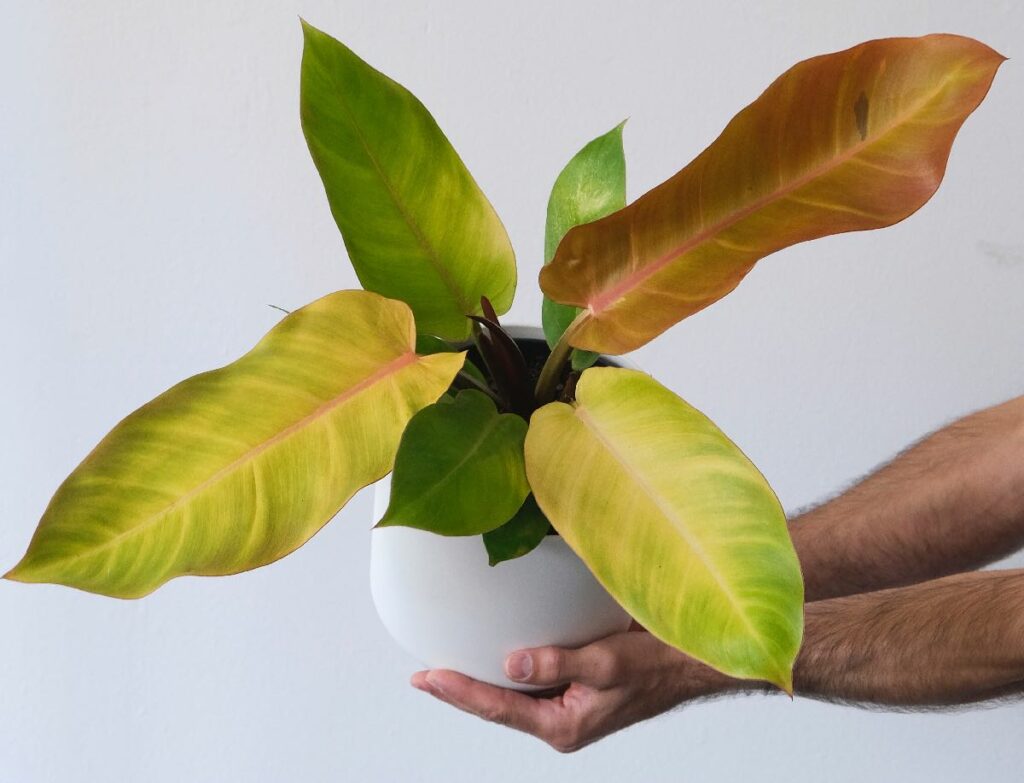
When it comes to the age-old debate of pothos versus philodendron plants, the answer is not so cut and dry. The decision ultimately boils down to personal preference and the specific needs of your home or office environment.
If you’re seeking a plant that requires minimal upkeep and can flourish in a variety of lighting conditions, pothos may be the way to go. Not only are they low-maintenance, but they also have the added bonus of purifying the air and adding a splash of green to any space.
On the flip side, if you’re in the market for a larger, more dramatic plant that can make a bold statement in a room, philodendrons may be the better choice. With a plethora of colors and textures to choose from, they are a versatile option for any design aesthetic.
In the end, both pothos and philodendrons are fantastic options for indoor plants and can bring a touch of nature into any space. It’s important to consider your specific needs and preferences when deciding between the two, and don’t be afraid to experiment with both to see which one works best for you.
Frequently Asked Questions
What is the difference between pothos and philodendron plants?
Pothos and philodendron plants are often confused with each other due to their similar appearance. However, there are a few key differences between the two:
How can I tell the difference between pothos and philodendron plants?
The easiest way to tell the difference between pothos and philodendron plants is by looking at their leaves. Pothos leaves are heart-shaped and have a smooth texture, while philodendron leaves are larger and have a more distinct split or notch at the base of the leaf.
Do pothos and philodendron plants require the same care?
While pothos and philodendron plants have some similarities in their care requirements, there are also some differences. Pothos plants prefer bright, indirect light and can tolerate dry soil, while philodendron plants prefer medium to low light and consistently moist soil. It’s important to research the specific care needs of each plant to ensure they thrive in your home.
Can pothos and philodendron plants be propagated in the same way?
Yes, both pothos and philodendron plants can be propagated through stem cuttings. However, pothos plants can also be propagated through division, while philodendron plants can be propagated through air layering.

